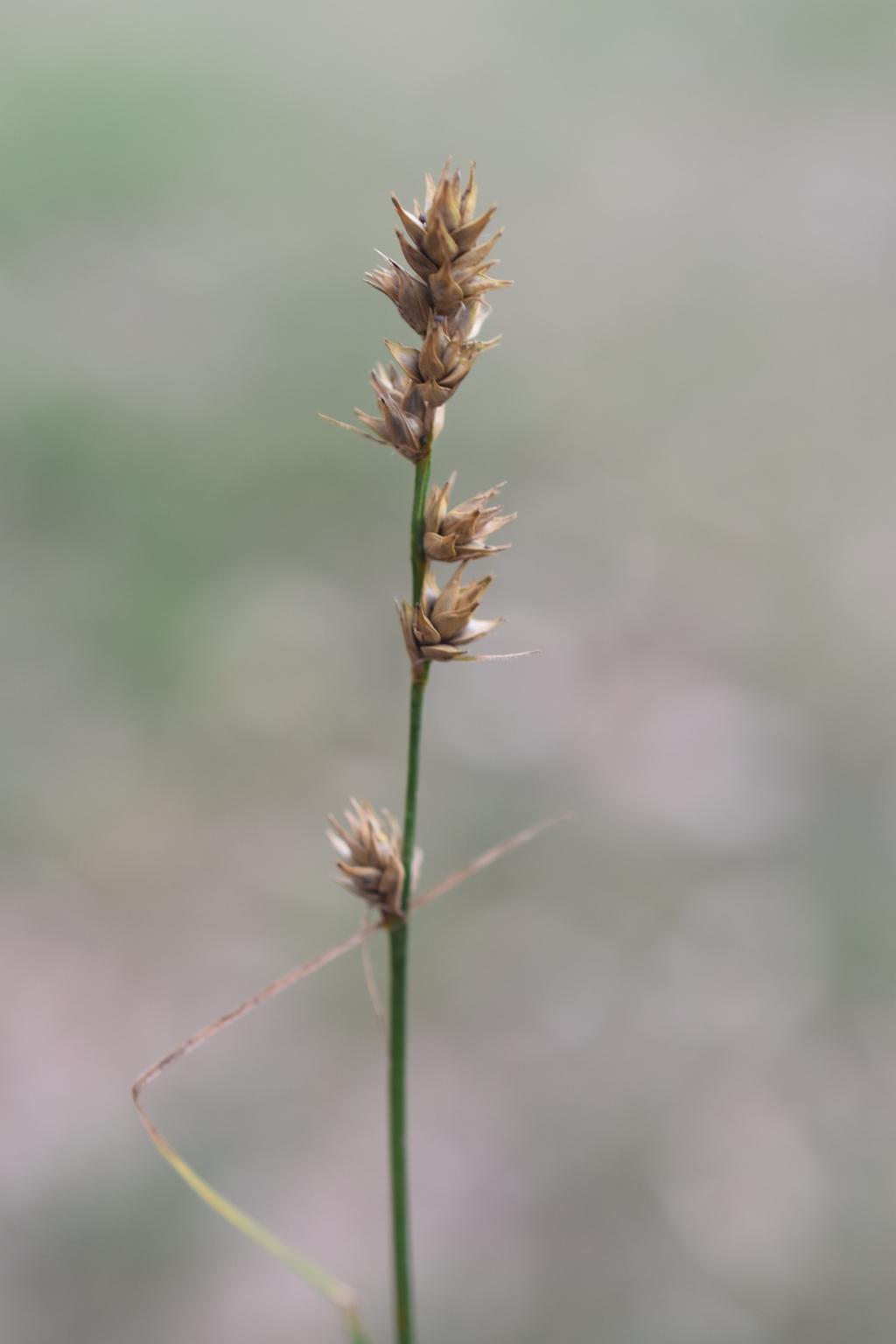Carex divulsa subsp. divulsa
Grey SedgeRhizome short; shoots ± densely tufted. Culms erect, trigonous, smooth or scabrous above, may be shorter than inflorescence, 5–75 cm long, less than 1 mm diam.; leaf sheath front (inner face) not cross-rugulose, back (dorsal surface) of leaf sheaths occasionally septate-nodulose. Leaves exceeding or equalling culms, 1.5–3 mm wide; sheath pale to dark brown, persisting as fibrous remains; ligule obtuse to rounded. Inflorescence narrow, erect, 5–10 cm long, with 5–10 spikes solitary at nodes; lowest involucral bract shorter than inflorescence. Spikes sessile, erect to spreading at maturity, 0.5–1.5 cm long; upper spikes female or with a few male flowers above, densely contiguous; lower spikes with male flowers above female flowers, distant; glumes acute to attenuate, whitish or hyaline with green midrib; female glumes 3.0–3.5 mm long; utricles 3.5–4.5 mm long, c. 1.7 mm diam., ovoid, faintly few-nerved, glabrous, pale green to dark brown; beak c. 1 mm long, with apex split abaxially, otherwise bifid; style 2-fid. Nut obovoid to ellipsoid, lenticular, yellow-brown. Flowers spring.
VVP, VRiv, GipP, OtP, WaP, CVU, NIS, HNF. Also NSW, Tas. Native to Africa (Algeria, Morocco, Tunisia), Eurasia. Naturalised in New Zealand, North America, South America. A serious weed of riparian areas and pasture, as well as gardens and lawns. Tolerant of rather dry conditions and poor soils.
The interrupted, few-flowered spikes and the pale or colourless glumes aid field identification.
Wilson, K.L. (1994). Cyperaceae. In: Walsh, N.G.; Entwisle, T.J., Flora of Victoria Vol. 2, Ferns and Allied Plants, Conifers and Monocotyledons, pp. 238–356. Inkata Press, Melbourne.
 Spinning
Spinning